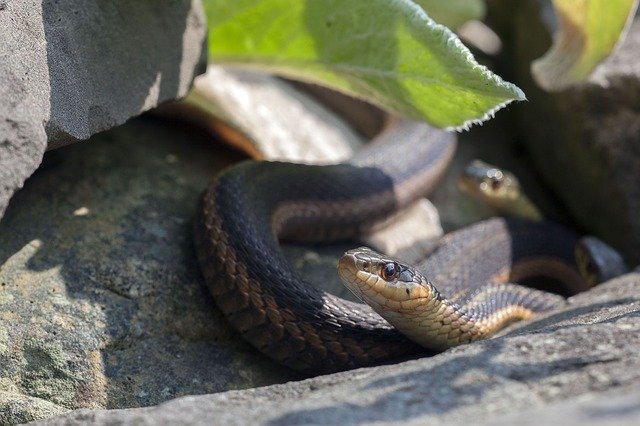Housing Multiple Snakes Together: Dos and Don’ts
December 5, 2020

Can You Keep Snakes Together?
Housing multiple snakes together can be beneficial for utilizing space and cutting your cost almost in half. The reptile community would be unstoppable if we could house several of our pets together. Unfortunately, snakes are antisocial creatures that do not appreciate having to share their space with others. Housing two or more snakes together can lead to unnecessary stress, cannibalism, fighting, and unplanned breeding. However, there are a few exceptions to this rule.
What Snakes Can Live Together?
There are very few species of snakes that can live together without having any negative side effects. I would never recommend keeping a male and female together unless you are prepared to raise snake babies.
- Garter snakes — These snakes are known to be social snakes in the wild and do well in pairs and even triplets (given that you provide them with an appropriately sized enclosure).
- Kenyan sand boas — These are fairly little snakes that have been known to do well in pairs, as long as you only keep one male to a group of two or three. They come in a range of morphs (colors and patterns) to choose from as well.

If you choose to house two or more snakes together there are a few rules that you will need to follow.
1.Double the size of the tank
This is absolutely mandatory. If the species of snake you are looking at requires a 20 gallon tank, you will need to provide the pair of snakes with a 40 gallon. If they do not have adequate room to move in their own areas, you run the risk of them being territorial and fighting over space.
2.Feed them separately
When it comes to feeding, you will need to separate your snakes. Feeding them in the same enclosure can lead to fighting and cannibalism. A lot of the time, when snakes are housed together and fed together, one snake will become more dominant and bully the other for food. This will cause the bullied snake to become underweight, while the bully becomes overweight.
3.House two of the same sized snakes
When picking out your snakes, make sure you choose ones that are roughly the same size. If you cohab one large and one small snake, the larger one will bully the small one.
4.Quarantine them separately
It is very important to quarantine your snakes separately when you first get them. This will allow you to monitor their health and feces individually. Once they’re in the same tank, you won’t know which snake produced what. For example, if one regurgitates when they’re together, you won’t know which one it was unless you witness it.
5.Watch for signs of stress
Watch your snakes closely to see if they seem stressed or aggressive towards each other. Just because a species can cohabitate does not always mean that they should. Each snake may react differently to sharing a living space with another. If one of the snakes begins refusing meals or becomes defensive immediately separate the two snakes.




Sending...